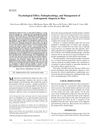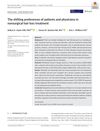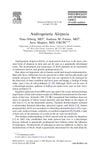How likely is it to reverse the hair count for each hair follicle? Chat 7/23/2024
Hair follicles can potentially produce more hair strands with treatments like Minoxidil and finasteride. Notable improvements in hair density are possible, but achieving multiple strands per follicle is uncertain.
View this post in the Community →
Similar Community Posts Join
5 / 1000+ resultscommunity COMPLETE OVERVIEW of the Treatment of androgenetic alopecia in men
Male androgenetic alopecia is commonly treated with topical minoxidil and oral finasteride, both requiring continuous use. Other options include hair restoration surgery, dutasteride, light therapy, and camouflaging agents.
community Can someone explain the science behind why Finasteride doesn't stop you from losing regrown hairs from minoxidil?
Finasteride prevents further hair loss by blocking DHT, while minoxidil stimulates hair growth by prolonging the active phase of hair follicles. Stopping minoxidil can lead to loss of regrown hair because finasteride does not address the same growth mechanism.
community PP405 is nothing but a scam and Pelage know it.
PP405 is criticized for overhyped claims and cherry-picked data, with doubts about its effectiveness compared to minoxidil and finasteride. Many users express skepticism, emphasizing the need for more comprehensive trial results.
community People are misunderstanding PP405. 31% response at 8 weeks is better than you think
PP405 shows promise as a hair loss treatment, with 31% experiencing increased hair density in a short trial. It may complement treatments like finasteride and minoxidil, but long-term effectiveness and safety need confirmation.
community Why do Minoxidil gains need continued Minoxidil to be kept and can´t be retained with DHT blockers?
Minoxidil and finasteride work through different mechanisms; minoxidil-dependent hair requires continued use to maintain growth, while finasteride prevents further hair loss but cannot sustain minoxidil gains alone. Current treatments like minoxidil, finasteride, and others need indefinite use, as no permanent solution exists yet.
Related Research
6 / 1000+ results
research Psychological Effect, Pathophysiology, and Management of Androgenetic Alopecia in Men
Minoxidil and finasteride can slow hair loss and stimulate regrowth, but won't restore all lost hair or reverse complete baldness.

research The Shifting Preferences of Patients and Physicians in Nonsurgical Hair Loss Treatment
Minoxidil and Finasteride are the most popular hair loss treatments, with rising interest in other options, and economic or health crises can change what treatments people prefer.

research Androgenetic Alopecia: Clinical Features, Classification, and Treatments
Male pattern hair loss is genetic and influenced by hormones, with treatments like minoxidil and surgery available.

research Experimental and Early Investigational Drugs for Androgenetic Alopecia
New hair loss treatments may include topical medications, injections, and improved transplant methods.

research Low-Level Light Therapy and Hair Loss
Low-level light therapy is FDA-approved for male pattern hair loss, increases hair count and strength, and is considered safe for use.

research The Use of Platelet-Rich Plasma in the Treatment of Alopecia - A Review of the Literature
Platelet-Rich Plasma therapy helps increase hair density and regrowth for some types of hair loss.